When it comes to James Dean, Porsche and racing, most everyone knows the end of the story. But how many know the long tail of passion that followed? The answer to that and many other questions are tucked away in Palm Springs, California, with a retired businessman who, as a racer, had the potential to win at Le Mans.
The archives of Lew Bracker, Dean’s closest friend and author of the 2013 book, Jimmy and Me: A Personal Memoir of James Dean, transcend the young star’s career and inform us of his humanity and simplicity. It was “Jimmy” who infected Bracker with the racing bug.
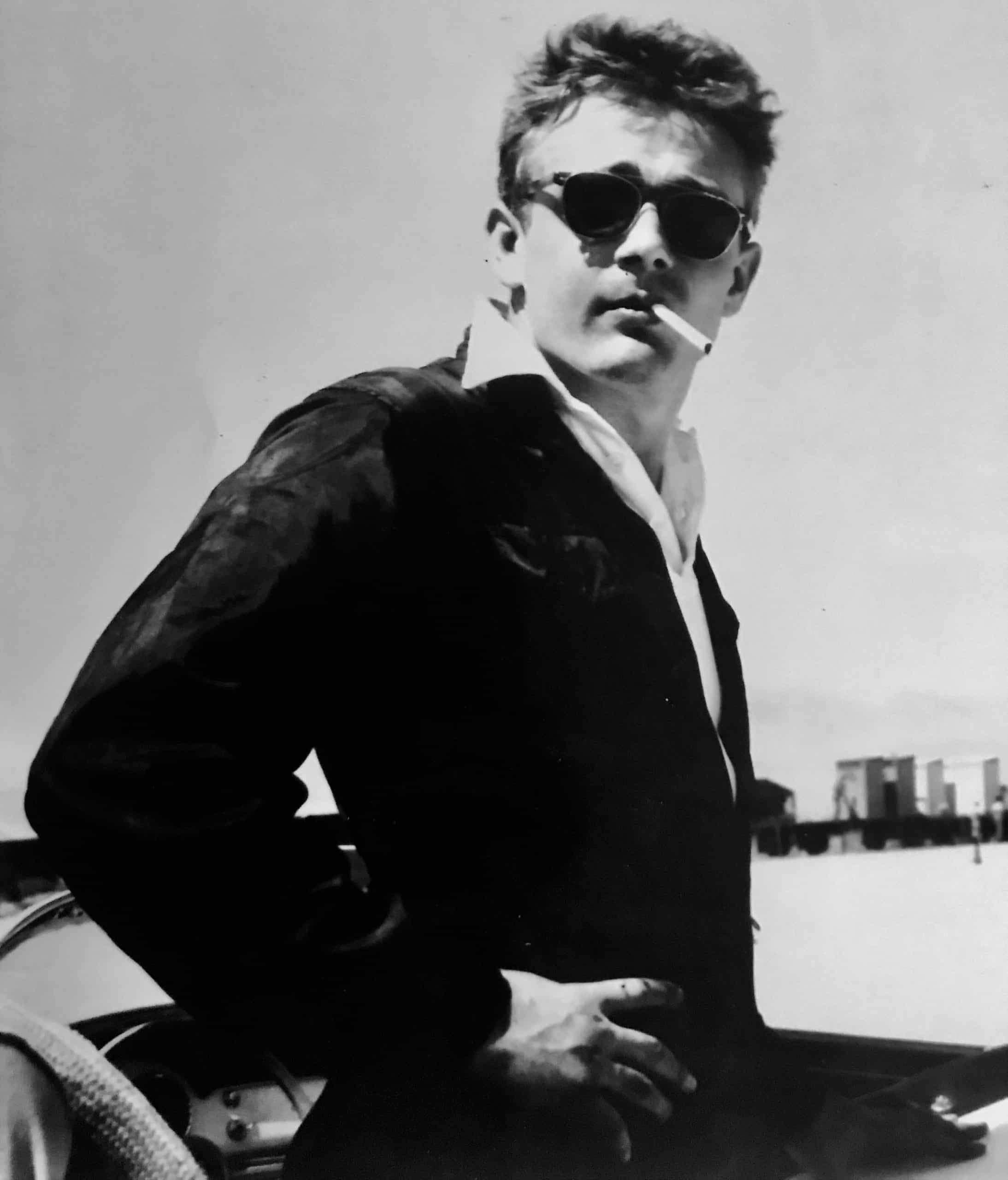
Since his book’s publication, Bracker has travelled extensively as an invitee to many James Dean-themed events, and the actor/racer’s legacy has hardly diminished since his death 65 years ago this September.
James Dean would have turned 89 years old on February 8 had he not met his end at the intersection of State Route 46 (then Route 466) and State Route 41 in Cholame, California. He was headed to a race at Salinas and was breaking in his new Porsche 550 Spyder, “Little Bastard,” on that day, September 30, 1955.
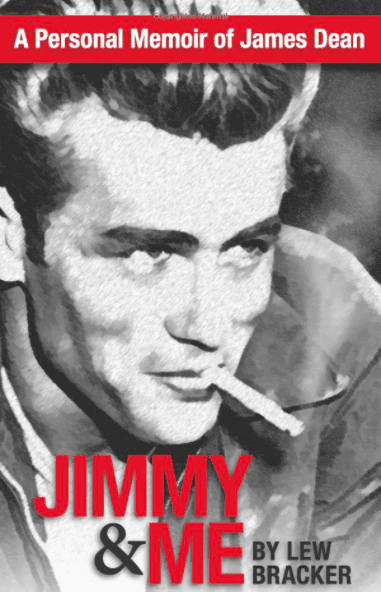
Bracker turned 91 this past September. He has lived a blessed life of reasonable success and parenthood. Urged by both his daughters, Alison and Lesley, and by the late racer/journalist Denise McLuggage to put his memories to paper, the resulting book has wowed fans old and new. Jimmy and Me was the only book published by newly founded McLuggage’s publishing company before her passing.
“Denise’ biggest regret before she died was not being healthy enough to fully edit my book,” Bracker said.
Even with my own strong fascination with Dean, I found Bracker’s story to be just as interesting. He is a relatively easy guy to befriend. He has a kind nature, a keen wit and a quick smile. I’m sure, at the height of his career, his clients in his Mergers and Acquisition business were powerless against his charm.
Bracker and I have gotten together several times since his book was published, including lunch at Thermal Club racetrack when I was testing a Mazda MX-5 Cup car. But our recent visit was different. He invited me to his house, where we looked through his racing memorabilia and chatted about his Porsche years – and how he was inspired by his dear friend to a fascination that sadly would also be James Dean’s appointment with destiny.

“I had no interest in sports cars,” he remembered. “I had no interest in racing. I didn’t even know there was a Porsche. I was into Buick convertibles.”
“Jimmy invited me out to lunch at the studio. He did that a lot, particularly when he was bored. I came out for lunch. This was early on in our friendship. When I got there, he had an MG TD and he made me get in it and raced around the sound stages — just to make Jack Warner pissed off. So, he finally parks the car and he asked ‘what do you think?’
“I always told Jimmy the truth.”
Dean, usually surrounded by people who wouldn’t speak up, appreciated Bracker’s honesty.
“I said, ‘it makes a lot of noise, but it doesn’t go anywhere.’ Jimmy never said a word. But a few days later, he comes up to the house in a white Porsche Speedster. The first one I had ever seen. I said, ‘it looks like a bathtub turned upside-down.”
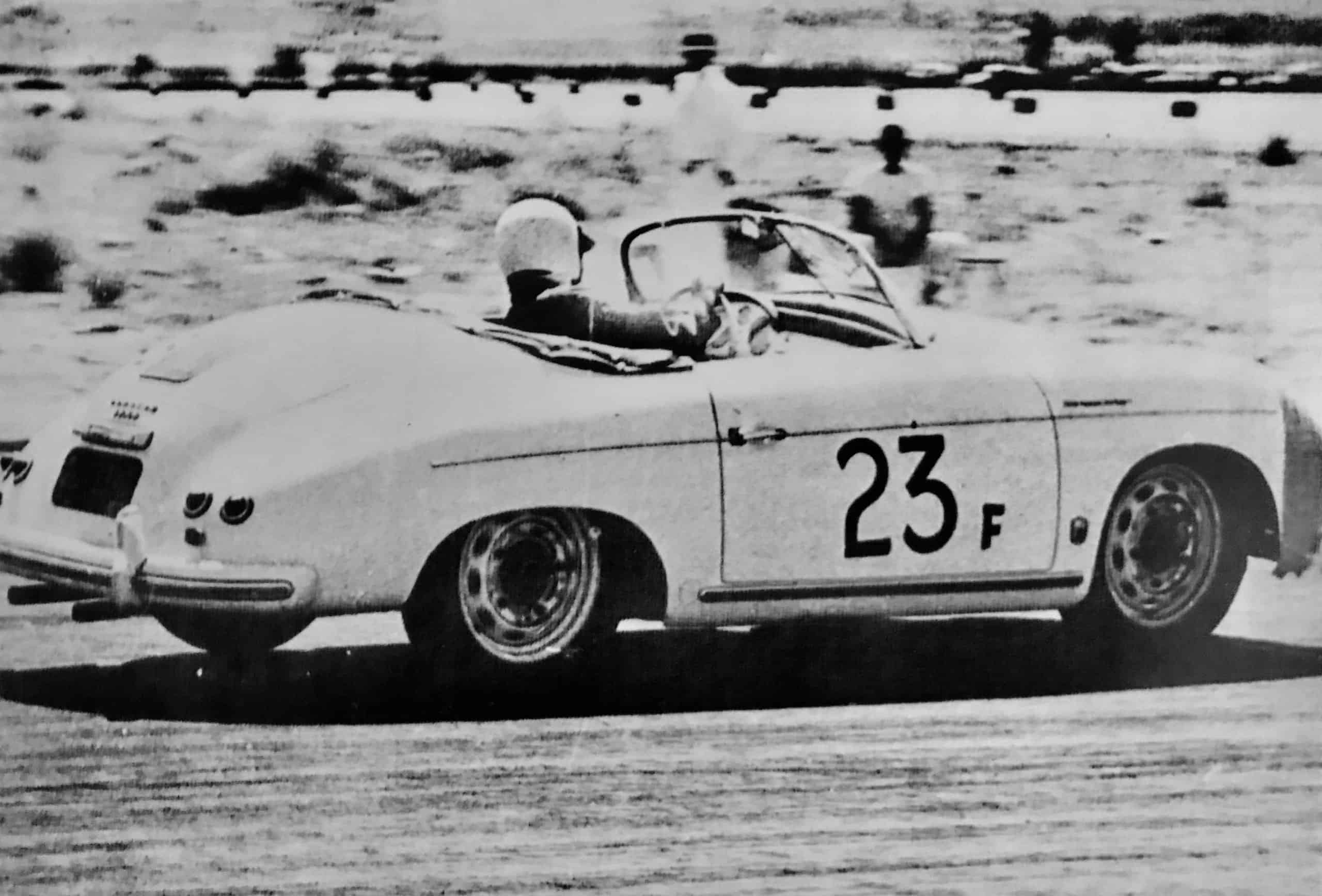
Dean said to hop in. They traveled up Laurel to Sunset Boulevard in a spirited drive.
“That ride was the seed that Jimmy planted in my brain.
“After Rebel (Without a Cause), Dean was in Texas filming Giant, I wasn’t interested in racing and hadn’t thought about it,” Bracker continued. “So I didn’t go to any of Jimmy’s three races. But while he was in Texas, somehow it built up in my mind, ‘I gotta get a Porsche.’ I traded in my Buick convertible on a red Porsche Speedster. When Jimmy came back, he was flabbergasted to see me in a Porsche. That was the summer of ’55. Once I had the car, I really started to get the bug. It was then decided I wanted to race.”
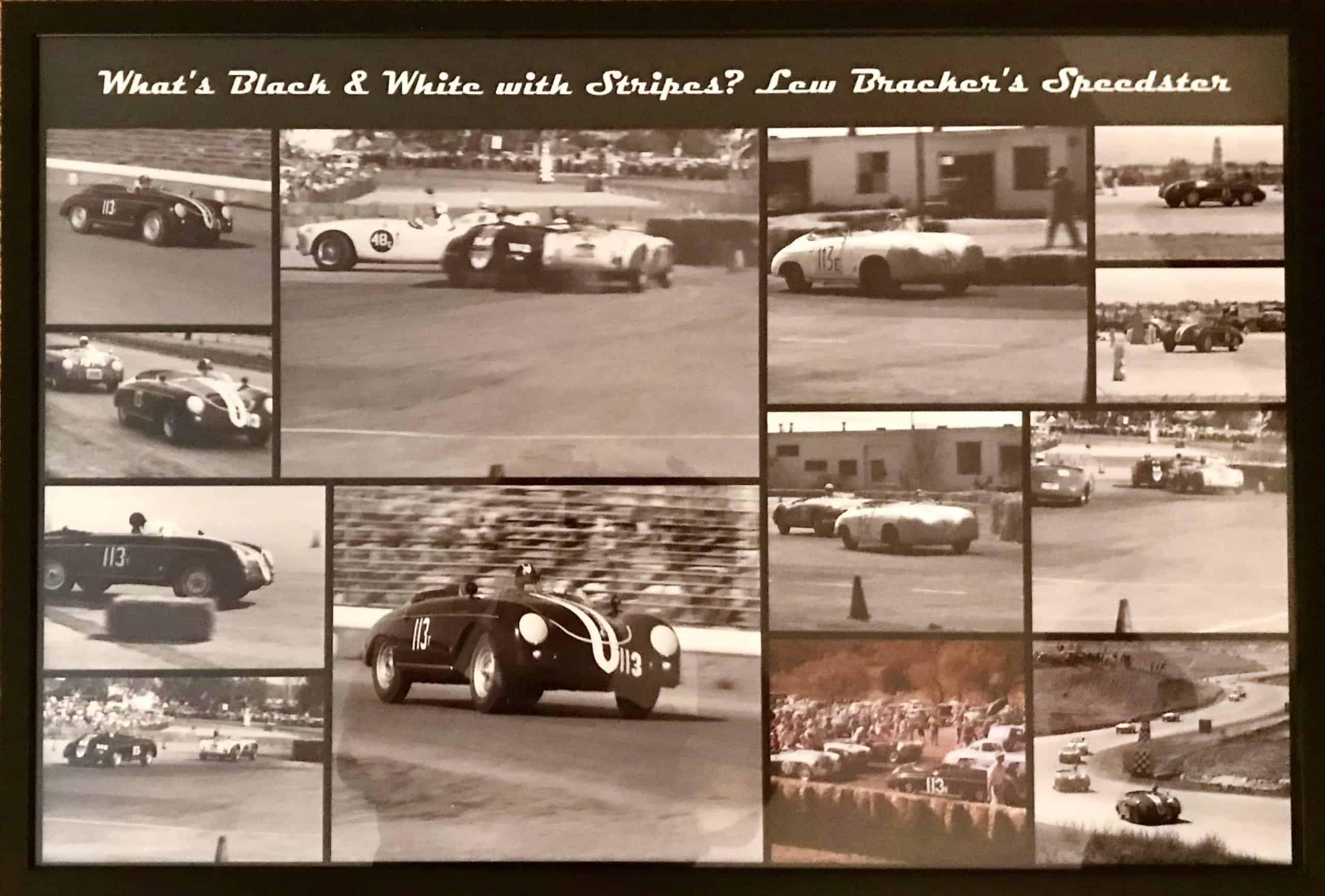
The first race would be at Santa Barbara. Dean was still under a contract with the studio that forbade racing. But he wasn’t going to miss his friend’s Labor Day weekend 1955 debut.
“Jimmy even signed and gave me his racing helmet, so he could ‘always be in the cockpit with me,” Bracker recalled.
Sadly, the signed, white Bell helmet was stolen in the 1970s.
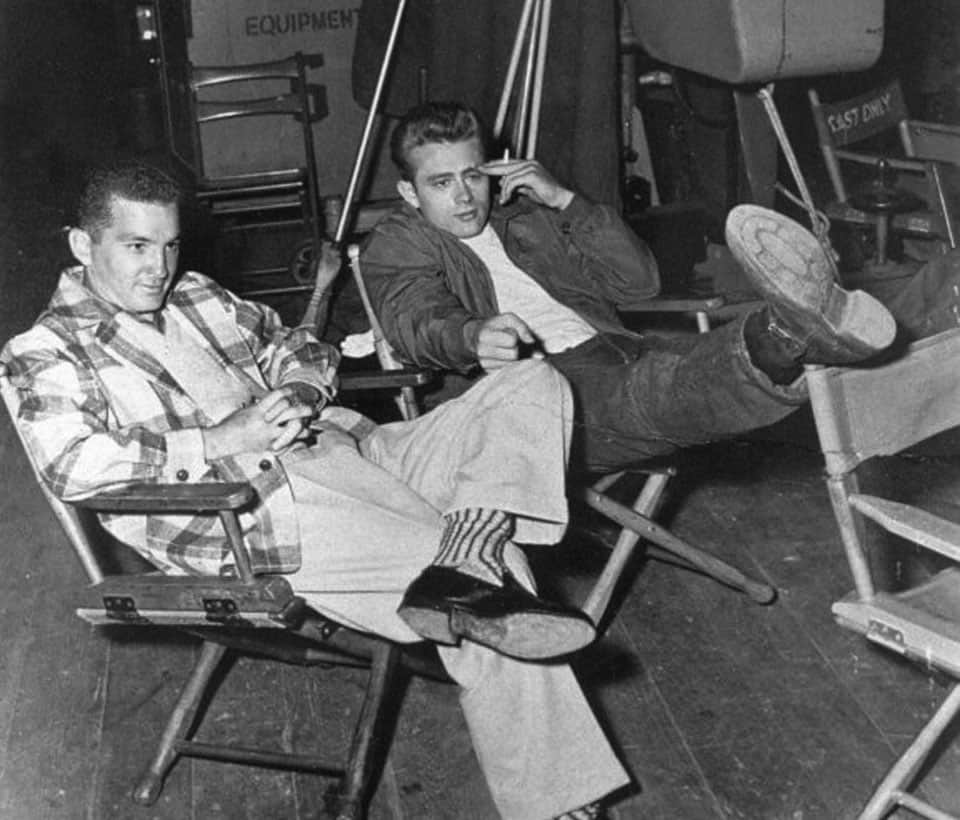
Giant wrapped and Dean was out of his contract and free to pursue racing again. He would do it with a brand-new track weapon: The 1955 Porsche 550 Spyder.
“The insurance office where I worked was on a direct line through Hollywood to Studio City. I would get bored with the routes. So I would take different routes,” Bracker said. “I’m going home one day, decided I’d go up a different way, which went right past Competition Motors. Driving up I glance over, and in the showroom, which only held about one car, is this Spyder, and you know new Spyders were rare coming here. This is on the floor, ready to be sold.
“When I got home, I picked up the phone and I called Jimmy. And I said ‘guess what I saw in Johnny’s window today?’ He said, ‘What?’ And I said, ‘A new Spyder.’
“Our conversations on the phone were usually short as neither one of us liked phone conversations, but I noticed he was even more in a hurry to get off the phone. The next day, late afternoon, he drives up in the Spyder.”

That weekend, Bracker and Dean went together to a local eatery frequented by Hollywood types. At the bar was Alec Guinness, who could not get a table and was about to leave. Dean was excited to meet the fellow actor and invited he and his friend to join them for dinner. Eager to show off the new Spyder, Dean asked Guinness outside to have a look. Bracker stayed at the bar and chatted with friends. As Bracker recalls, “When Alec came back in, he looked sick, visibly shaken, pale. I asked him if he was alright and he said, ‘Yes, but I asked Jimmy to never drive that car.”
Whether it was Jedi prophesy or intuition at looking at such a hot car, Guinness told Dean, “If you get into that car at all, it’s now Friday, 10 o’clock at night and by 10 o’clock at night next Thursday, you’ll be dead if you get into that car.”
Dean had numbers and the moniker “Little Bastard” painted on the car. “Little Bastard” was a frustrated term how many an SCCA racer would refer to the Porsches as they took the larger bore cars in the corners and held them off despite far less horsepower in early road racing.
On the morning of Thursday, September 30, 1955, Dean and a crew of three, including German mechanic Rolf Wütherich, a former Luftwaffe pilot, race driver and Porsche factory engineer who befriended Dean at a race, headed from Burbank in a station wagon towing the 550 Spyder. They were headed to Salinas for a race weekend, and Dean was chomping at the bit to race his new car.

After a gas stop, Dean wanted to put some miles on the car, to break it and get used to its mannerisms. Wütherich got in the passenger seat, so he could work with Dean on the finer points of the car and monitor any quirks that may develop in the first few hundred miles. They headed up Route 466…
A week before, when Dean drove up in the Spyder for the first time, “I said where’s your car?” Bracker recalled. “Jimmy had a Super Speedster and he had Lance Reventlow’s mechanic fashion a muffler setup to reduce the back pressure.
“Jimmy said, ‘I traded it in.’ Well, they only have one major salesman at that time and I knew him very well. I called him and I said, ‘Is Jimmy’s car there?’ And he said, ‘Yeah.’ So I said, “I want it!’ So, I go down and trade mine for his because I wanted the Super.”
That white 356 Super would provide a great deal of success for Bracker. He scored seven top-fives and three podiums in the car from 1955 through March 1957. He then upgraded to a beautiful black 356A Carrera and scored six victories and seven podiums that season.
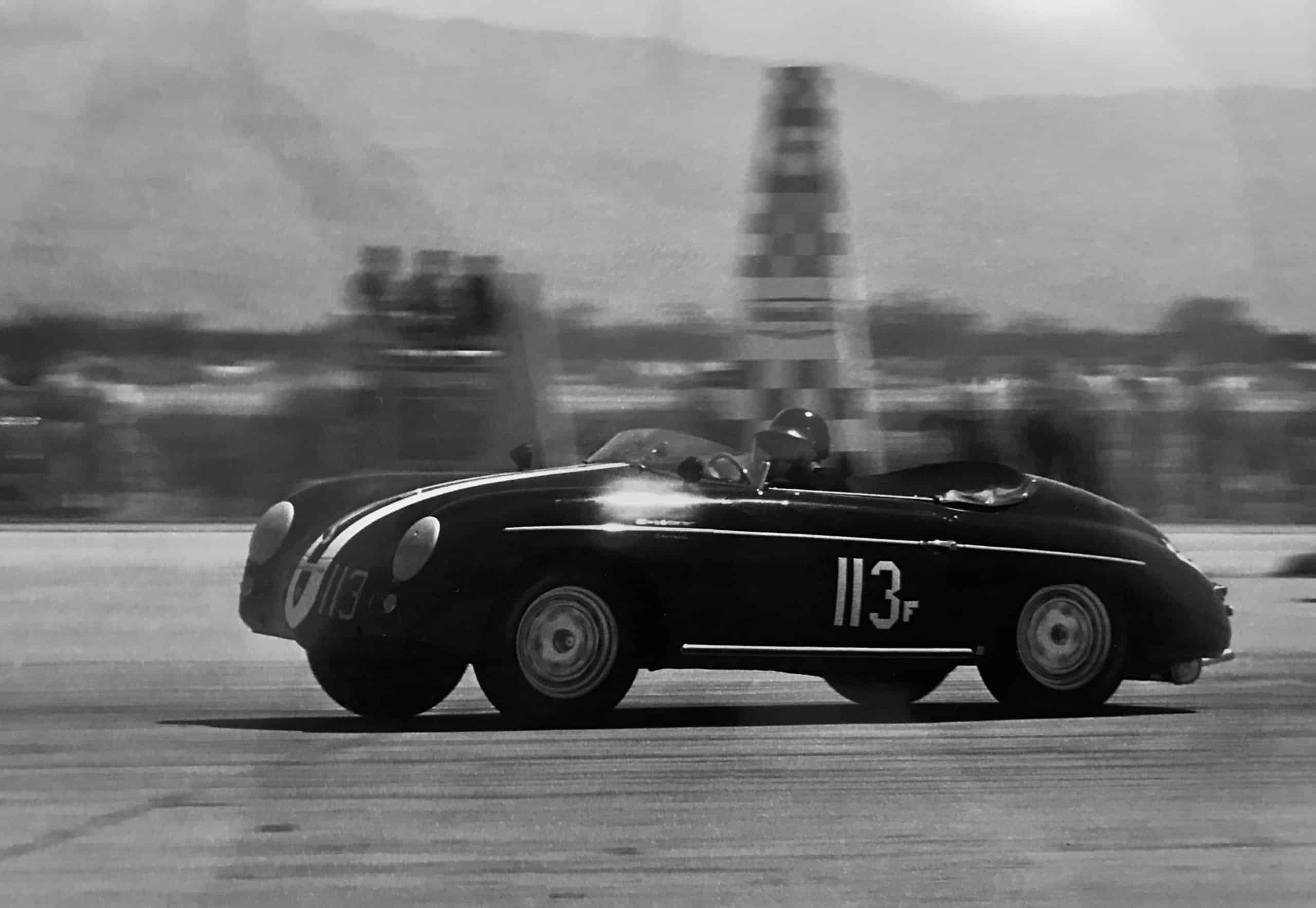
He was racing at many now legendary West Coast “ghost tracks,” including Torrey Pines, Palm Springs, Pomona, Paramount Ranch, Riverside, Pebble Beach and Bakersfield.
“Very few drivers raced on both coasts,” he said. “Dan Gurney, Phil Hill and Ken Miles would do that but there was so much going on in the West Coast and that’s where all the Porsches were anyhow. I wanted to go race the Eastern tracks in Florida and New York, but I never did. I wanted to go beat the eastern drivers to show them what racing really was,” he added with a laugh.
It was at this point that the Porsche factory racing team came calling, with an offer for Bracker to race in Europe.
“I got married in June of 1957,” he said. “Shortly after, my first daughter was on the way. Porsche wanted me to drive in Europe, and I didn’t see a future in schlepping my family around Europe. I turned my back on racing – I felt cold turkey was the only way I could do it.

“The biggest concern was ‘Would I be the same driver?’ The decision was internal. I started to think, ‘Would I be the same driver with a wife and a child?’ The honest answer to me was “No.” I always drove to what I felt was the edge. That’s what separates drivers. Would I go into a corner wondering if I was going to come out the other side?”
Bracker was content with his decision. No regrets.
Still, you have to wonder, what if he’d had been driving at Le Mans in 1958 in one of those wonderful, flat-4 718 RSKs that dominated their class. What if?



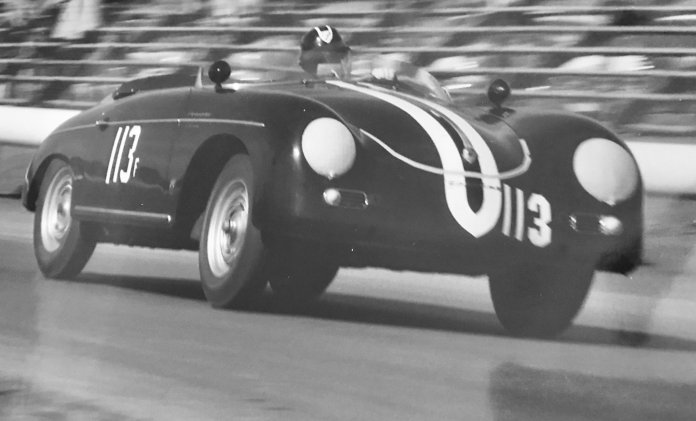


Awsome story!
Thank you!
Nice insight, will be seeking out the book now.
Amazing story. Thanks a lot!
Thank you for reading!
Maybe some of your best work. Seeking out the generally unknown and revealing stories that aren’t general knowledge is the heart of great reporting. TRS
Thanks T. Richard. You know where the inspiration comes from…
It’s a wonderful book!
Hola, quería saber tu precio..
$11.99